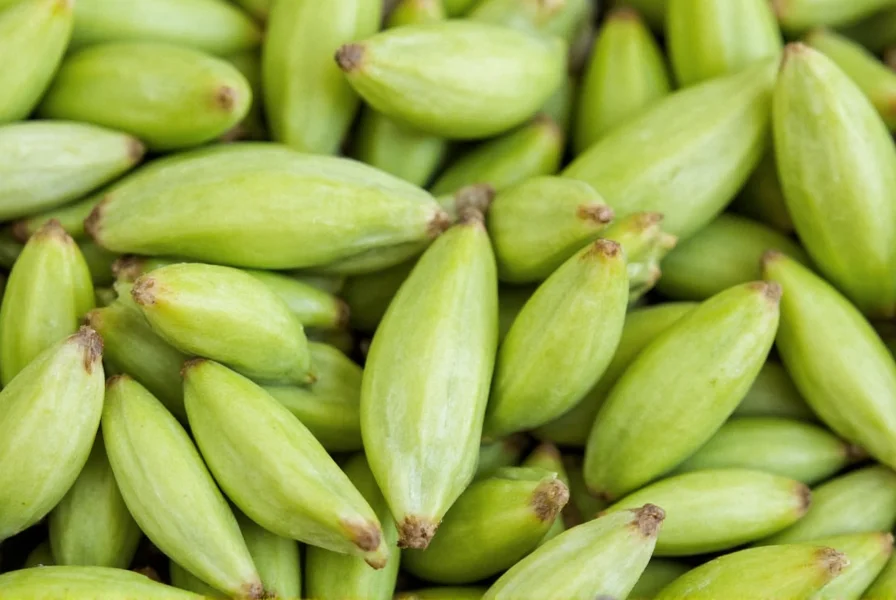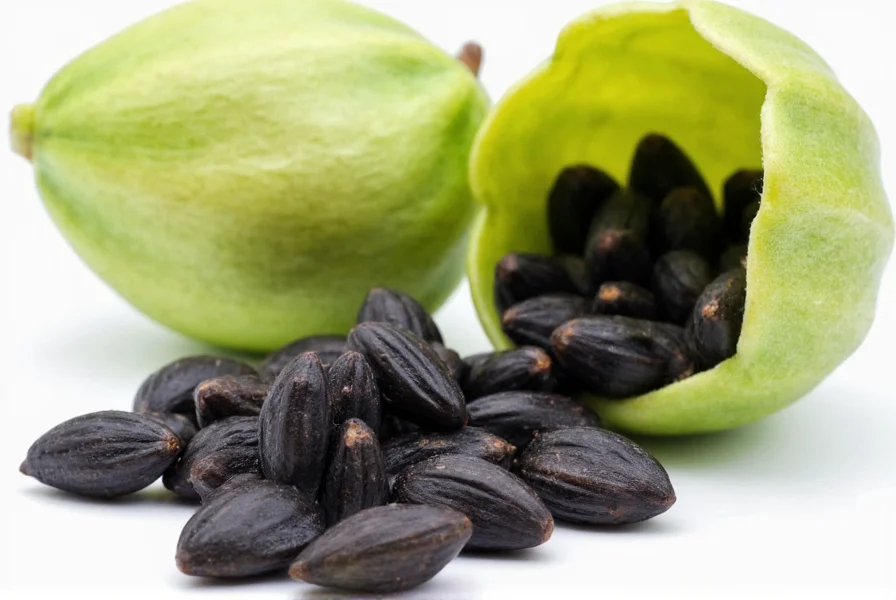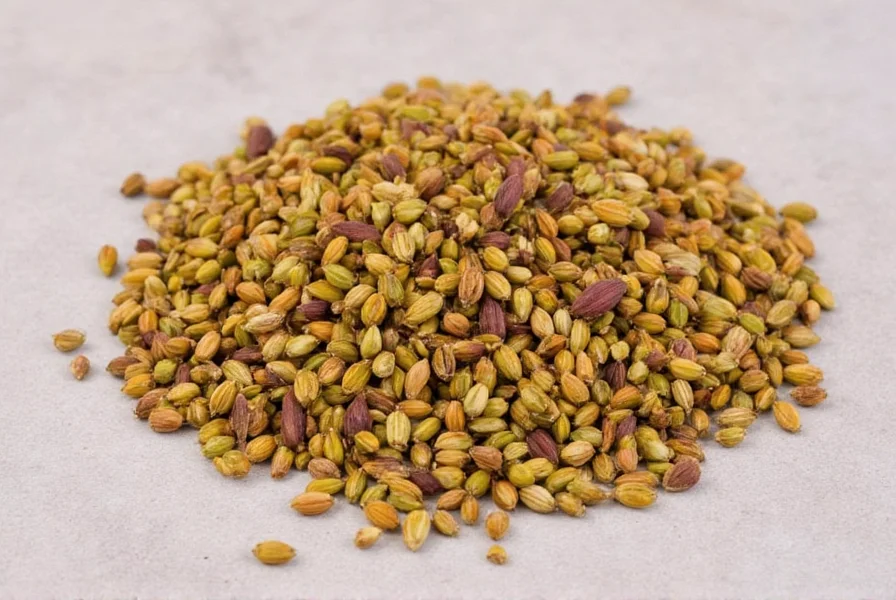Understanding what does the spice cardamom taste like requires exploring its nuanced sensory characteristics. This ancient spice delivers one of the most complex flavor profiles in the culinary world, making it prized across global cuisines for centuries. Cardamom isn't a one-note spice but rather a symphony of tastes that evolve as you experience it.
When you first encounter cardamom, particularly green cardamom which accounts for most culinary use, you'll notice an immediate citrus burst reminiscent of lemon or orange peel. This bright top note quickly gives way to herbal undertones similar to mint or even subtle eucalyptus. As the flavor develops on your palate, warm spice elements emerge—think gentle pepperiness without the heat, combined with faint floral notes that make cardamom uniquely versatile.
| Cardamom Type | Primary Flavor Notes | Best Culinary Uses |
|---|---|---|
| Green Cardamom | Citrus, mint, floral, subtle pepper | Baking, chai, rice dishes, Scandinavian pastries |
| Black Cardamom | Smoky, camphor, menthol, earthy | Indian curries, stews, braises, meat dishes |
| White Cardamom | Milder, less complex, slightly bleached flavor | Commercial baking where visual appeal matters |
The complete cardamom flavor profile description reveals why this spice works equally well in sweet and savory applications. Unlike many spices that lean heavily toward one culinary direction, cardamom's balanced complexity allows it to enhance both desserts and main courses. When evaluating how would you describe cardamom taste, professional chefs often note its remarkable ability to complement rather than dominate other ingredients.
One distinctive characteristic that sets cardamom apart from similar spices is its cooling aftertaste. While many warm spices like cinnamon or cloves leave a lingering heat, cardamom finishes with a refreshing quality similar to mint—though without the menthol intensity. This cooling effect explains why cardamom features prominently in Middle Eastern and Indian digestive preparations.

When comparing cardamom taste compared to other spices, it shares some characteristics with several common spices but maintains a unique identity. It has the warmth of cinnamon without the sweetness, the complexity of cloves without the medicinal note, and the citrus element of coriander without the earthiness. Many people searching for what does cardamom taste similar to find it difficult to pinpoint because cardamom creates its own distinctive flavor category.
The form in which you use cardamom significantly impacts its flavor expression. Whole pods release flavor gradually and provide the most aromatic experience. Crushed pods offer a more immediate but still controlled release. Ground cardamom delivers the most intense but shortest-lived flavor, though it loses potency quickly—explaining why many chefs insist on grinding pods immediately before use when seeking the most authentic fresh cardamom pod taste experience.
Culinary applications vary dramatically based on cardamom type. Green cardamom shines in sweet applications like Scandinavian kardemummabullar, Indian kheer (rice pudding), and Middle Eastern coffee. Black cardamom, with its smoky profile, enhances savory dishes like Indian biryani and Chinese five-spice powder. Understanding these distinctions helps explain why recipes specifying cardamom type yield dramatically different results.
A common misconception appears when people ask what does green cardamom taste like expecting a single dominant note. In reality, cardamom's magic lies in its layered complexity—no single flavor dominates, creating a balanced profile that enhances other ingredients without overwhelming them. This characteristic makes it invaluable in spice blends from Indian garam masala to Arabic baharat.

When incorporating cardamom into recipes, consider its flavor evolution during cooking. Unlike some spices that mellow with heat, cardamom's delicate citrus notes can dissipate if added too early, while its warming elements intensify. For baking applications, many professionals recommend adding ground cardamom during the final mixing stage to preserve its bright top notes—a crucial insight for those exploring cardamom in baking flavor characteristics.
The quality of cardamom dramatically affects its taste profile. Fresh, high-grade cardamom should have a vibrant aroma when pods are crushed, with seeds that spring back when pressed. Stale or low-quality cardamom loses its citrus brightness, leaving only the peppery notes and developing a musty aftertaste. This explains why many home cooks report inconsistent results when using pre-ground cardamom from supermarkets.
For those experimenting with cardamom for the first time, start with small amounts—a single pod can flavor an entire cup of coffee or a batch of cookies. The spice's intensity builds gradually, and its complex profile means you'll notice different elements at different stages of consumption. This evolving taste experience is precisely what makes understanding cardamom aftertaste description so important for proper usage.
What does cardamom taste like in coffee?
Cardamom adds a bright, citrusy note to coffee that complements the roast's bitterness without adding sweetness. It creates a complex flavor profile with subtle floral hints and a refreshing minty aftertaste that cleanses the palate. In Middle Eastern coffee preparations, just one crushed pod per cup transforms the beverage into an aromatic experience where the cardamom enhances rather than masks the coffee's natural characteristics.
Is cardamom sweet or spicy?
Cardamom contains elements of both sweetness and spice but doesn't fit neatly into either category. It has a naturally sweet citrus top note that gives the impression of sweetness without actual sugar content, combined with a gentle peppery warmth that provides spice characteristics without heat. This dual nature explains why cardamom works equally well in desserts and savory dishes—it bridges the gap between sweet and spicy flavor profiles.
How does cardamom compare to cinnamon in flavor?
While both are warm baking spices, cardamom and cinnamon have distinctly different flavor profiles. Cinnamon delivers straightforward sweetness with woody, bark-like notes and noticeable warmth. Cardamom offers a more complex experience with citrus brightness, herbal freshness, and floral undertones alongside its gentle spice. Cardamom's flavor evolves more dramatically on the palate, starting bright and citrusy before developing warm notes, whereas cinnamon provides more consistent warmth throughout.
Why does my cardamom taste bitter?
Bitter cardamom typically indicates one of three issues: using too much spice, using stale or low-quality cardamom, or improper preparation. Cardamom seeds contain bitter compounds that become prominent when overused or when pods are ground too finely. Fresh cardamom should have a balanced flavor without bitterness. If your cardamom tastes bitter, try reducing the quantity, using whole pods instead of ground spice, or purchasing fresher cardamom from a specialty spice merchant.
Can you eat cardamom pods whole?
While cardamom pods are technically edible, they're typically not consumed whole due to their tough, fibrous texture. In many traditional preparations, whole pods are added during cooking then removed before serving, similar to bay leaves. The valuable flavor comes from the small black seeds inside the pod. Some cultures, particularly in India and the Middle East, chew whole pods as a breath freshener, but most culinary applications involve removing the seeds from the pods for optimal flavor release and texture.











 浙公网安备
33010002000092号
浙公网安备
33010002000092号 浙B2-20120091-4
浙B2-20120091-4